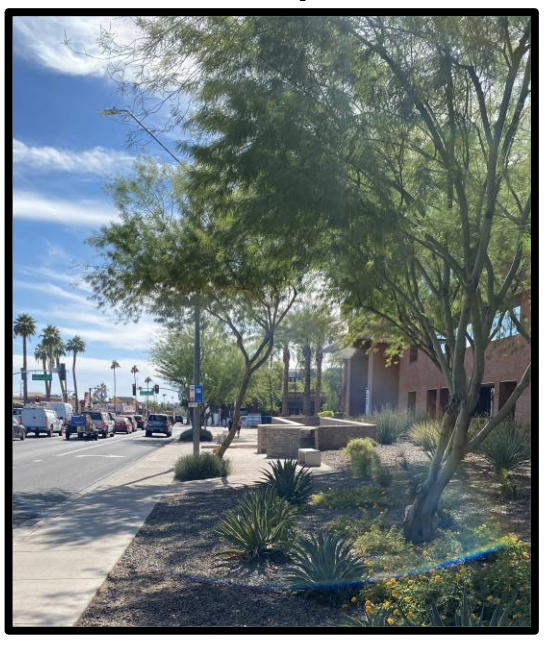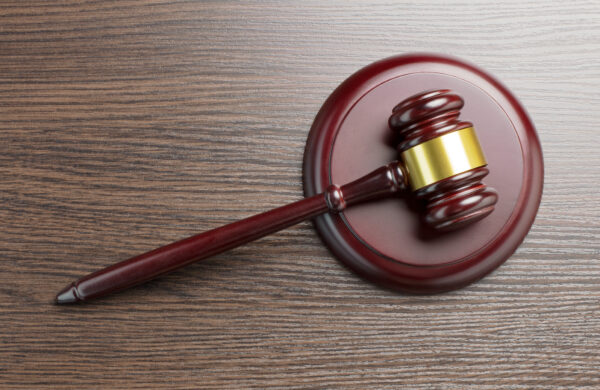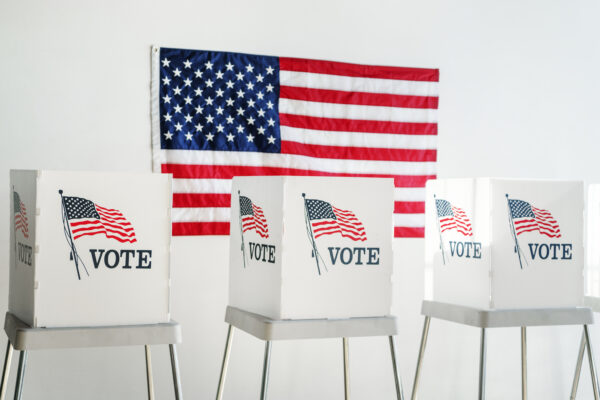What is walkability?
By Paul Basha, traffic engineer, Summit Land Management
Where on the scale of enjoyable-to-acceptable-to-tolerable-to-avoidance are these various environments? All are within a five-minute walk of each other.
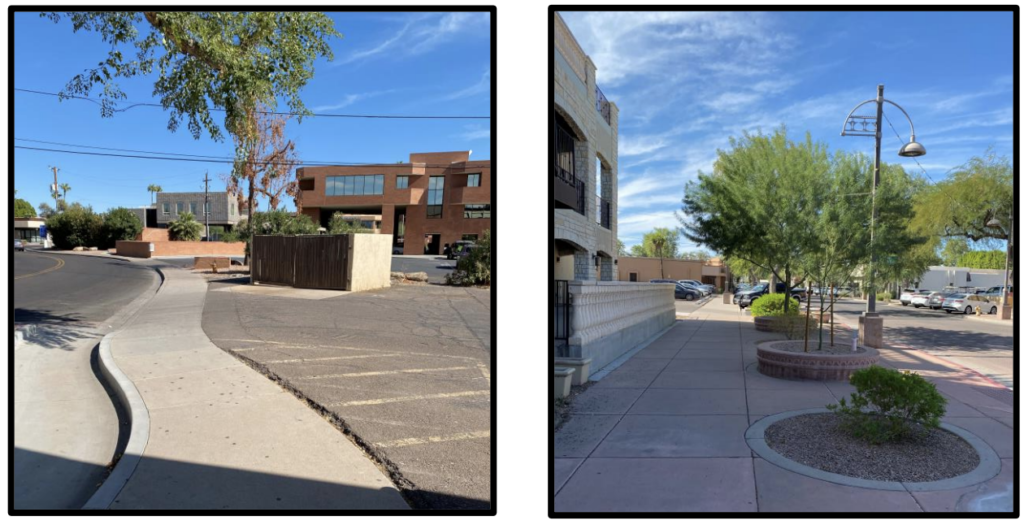
Certainly a wide unobstructed path is preferable. I understand the moon is wide and unobstructed. Plants are good, as are different shapes of something. Ugly is bad.
Back in the mid-1990’s, when I was the Scottsdale traffic engineer, a friend was complaining to me about the walking distance from her home at Scottsdale and Oak to Los Arcos Mall at Scottsdale and McDowell compared to the walking distance from her home to her grocery store at Scottsdale and Thomas. (Actually they look much the same a quarter-century later – though that is changing.) The conversation ensued several days with me continuously mansplaining that the walking distance to each destination was identical: one-half mile from her home. Eventually I understood her concern. The walk to the grocery store was past several interesting shops and businesses with people coming and going. The time passed pleasantly and quickly. The walk to Los Arcos was worse than boring – nothing and no one to see, repetitively.
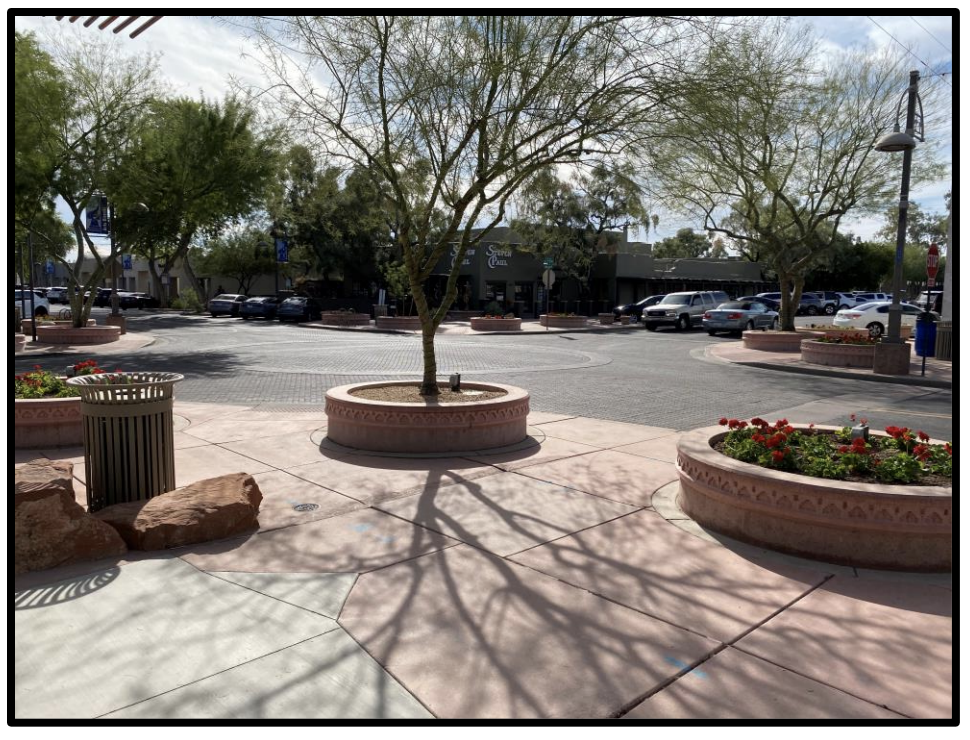
While many organizations and associations have attempted to define walkability, there is minimal consensus on criteria.
The National Association of City Transportation Officials suggests, “People crave activity and variety at street level. . . . While activity is of paramount importance to the pedestrian realm, public safety, . . . [adequate] width, . . . , protection from rain, and shade from the sun together make the difference between a successful street and a barren one.” The Institute for Transportation and Development Policy offers the generalized goals of “Infrastructure, Activity, and Priority”. They focus on interesting places and spaces to see and experience.
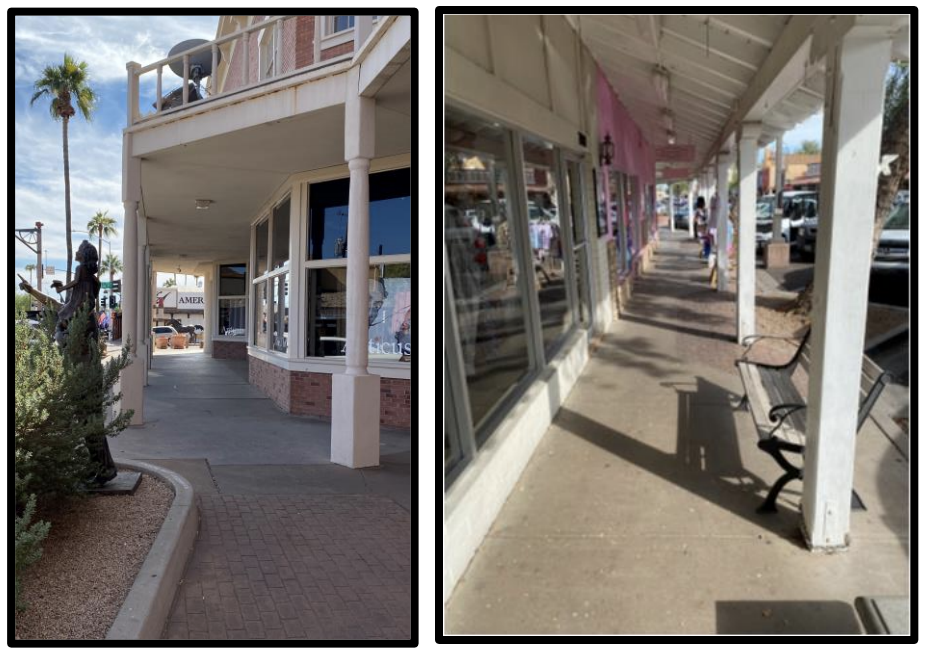
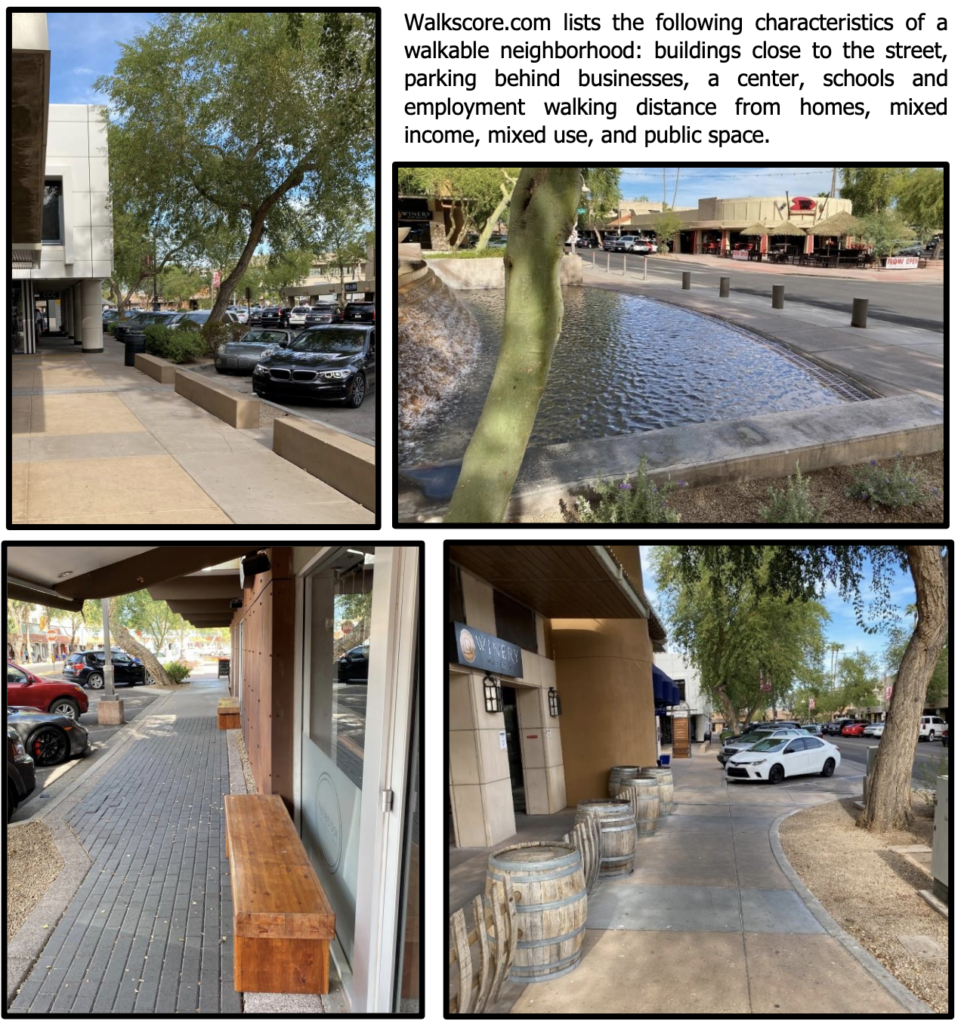
The Americans with Disabilities Act of 1990 provides specific requirements for unobstructed width, slope in the direction of walking, and slant in the perpendicular direction. If stairs are provided, gradual ramps with railings are also necessary.
One measure of walkability is the enjoyment of the journey – which obviously varies by person. Another measure of walkability is accessibility – defined as the ability to leave one place and go to another place. If you must drive a car to get to the place you can walk: that is not walkability. If 90% of the trip between two desired places can be walked, but the remaining 10% requires crossing six motor vehicle lanes a half-mile from a signal, or involves climbing a fence or other such obstacle, or requires walking on an uneven or rutted dirt surface; it is not 90% walkable, it is completely not walkable.
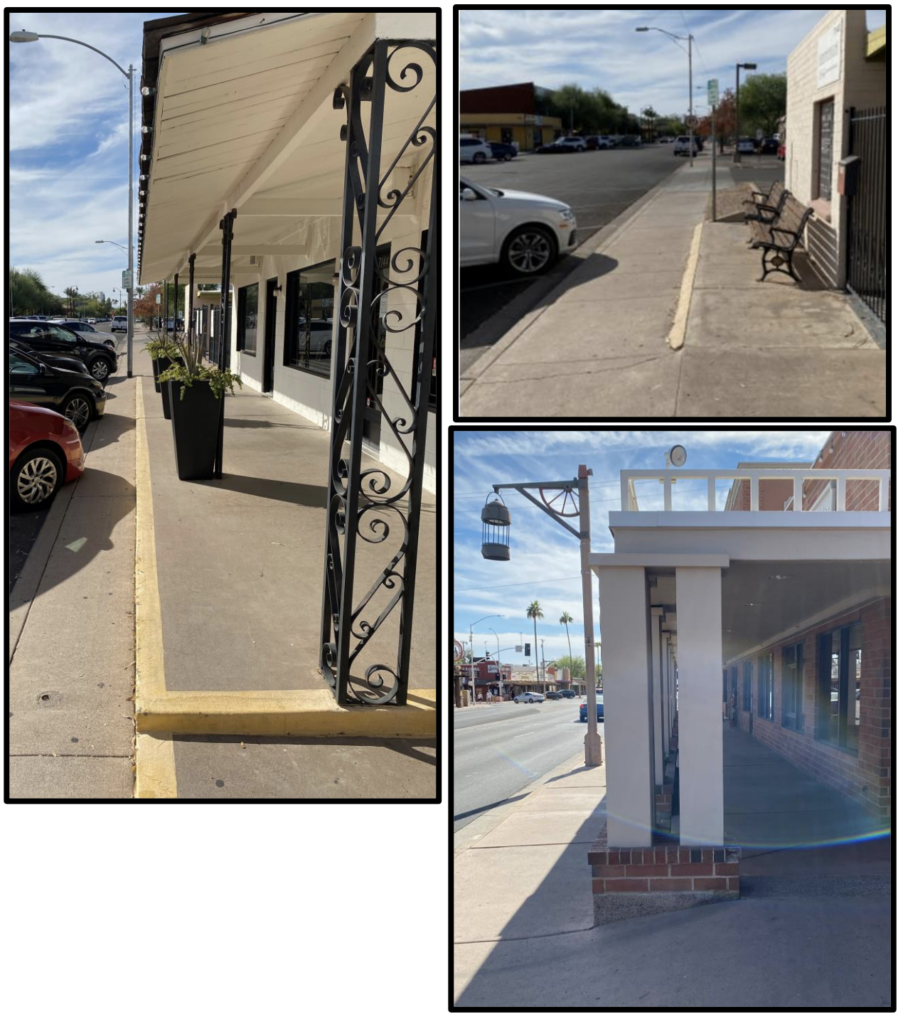
The Americans with Disabilities Act also requires ramps from curbs to street at intersections. The ramps require texture. The texture is to inform a blind person with a cane exactly where the ramp begins and where the street begins. The little button-like bumps are most difficult for people in manual wheelchairs and for people needing crutches. John Steinbeck named a novel based upon a poem by Robert Burns: “the best laid plans of mice and men oft go astray”.
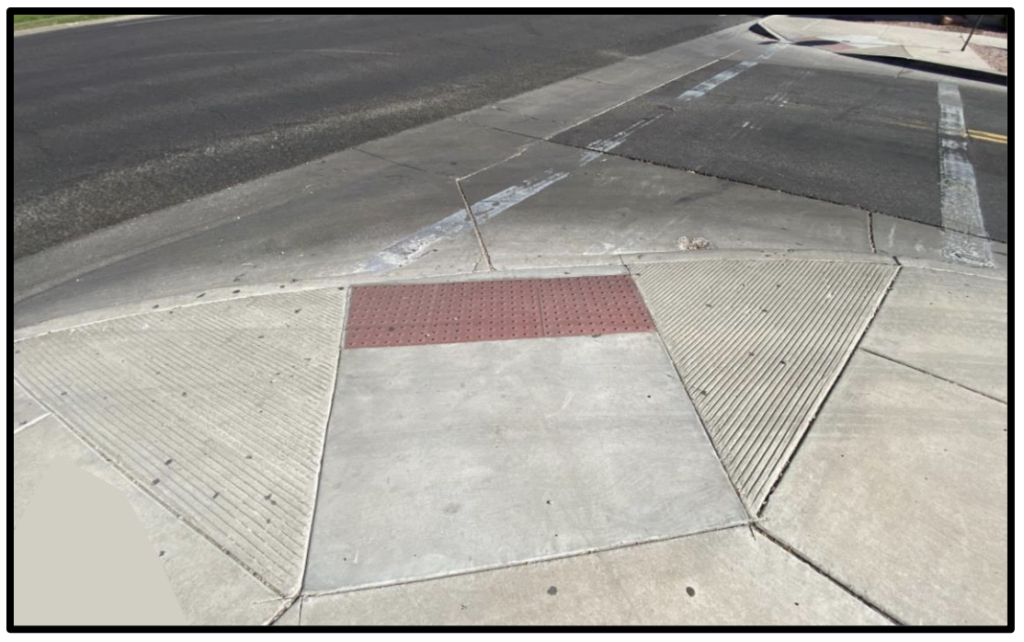
One Americans with Disabilities Act requirement was that one ramp would be appropriate for both crosswalks in perpendicular directions. This design was quite peculiar as it directed wheelchairs into the intersection instead of the crosswalk. Furthermore, it did not provide clear direction to unsighted people walking with a cane. Another requirement was directional ramps which are superior for both wheelchair and cane users. However, directional ramps require wide sidewalk area, which is often unavailable. Tough to make everything just right for everyone.
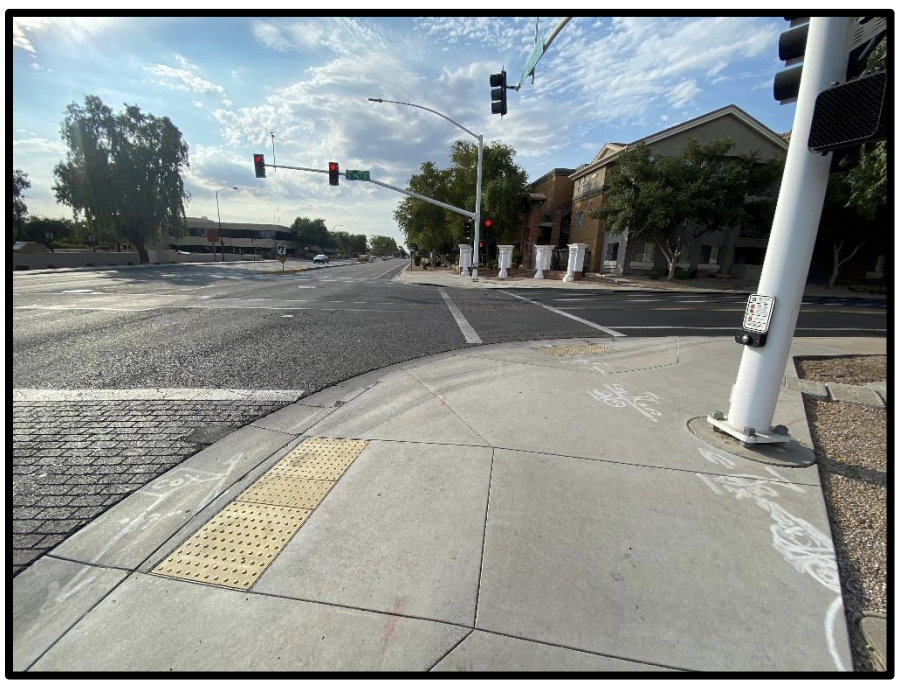
In spite of the difficulties, these intersection ramps are very beneficial for all people – wheelchair users, cane users, bicycles, skateboards, scooters, Segways, and pedestrians. Once while Scottsdale’s traffic engineer, I spent an afternoon operating a manual wheelchair throughout Old Town with a Scottsdale Transportation Commissioner who always used a wheelchair. A most enlightening afternoon. If I did not have the use of my legs to prevent errant travel, I would have been killed in traffic – too many steep sidewalks and ramps. Commissioner McMillan found it most amusing. A few years later, I became friends with a Saguaro High School student who was blind. One afternoon, Ben took me for a walk crossing streets with me having my eyes closed and holding his arm to lead me. I gained a new appreciation for trust. Actually the blind leading the blind worked quite well. Walkability has many definitions. All intended to make the world less frightening and more pleasant.
We are a social species – generally we enjoy others of our kind – with each of us having notable exclusions. We function best when we see other people regularly – the definition of community.
Walkability encourages frequent interaction. Except for two days of our life, we will exist for 24 hours each day. What we see, hear, feel, and experience for the 24 hours of each day determines our happiness. Our perspective of each other when we are driving amongst other people in vehicles is quite different than our perspective of others when we walk past each other.
One of Ray Bradbury’s best short stories is “The Pedestrian”, published in 1951, set in 2131, when people traveled only by automated vehicles. In Mr. Bradbury’s story, a man delighted in walking . . . and was arrested by an automated police car. The pedestrian is taken to a psychiatric center because of his atypical and regressive tendencies.
Curious about something traffic? Call or e-mail Paul at (480) 505-3931 and pbasha@summitlandmgmt.com.

